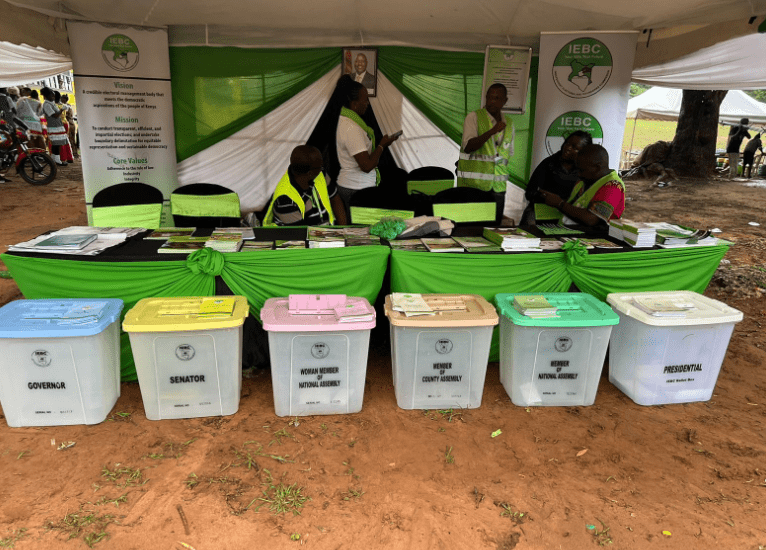Utilising community health promoters as first line of defense in TB control

Building the capacity of the health workers will support their role in providing directly observed treatment support to patients and ensure those affected are linked to care, ultimately ensuring disease prevention, diagnosis, and treatment.
The government has been urged to allocate more resources towards training Community Health Promoters (CHPs) and integrating them into TB programmes in order to effectively reach all tuberculosis (TB) patients. This call comes after a pilot programme that was carried out in Migori and Makueni counties proved to be effective.
Gladys Njaka from Catholic Medical Mission Board (CM MB), an organisation that was conducting the trial in Makueni County, says use of community health promoters led to a significant increase in TB contacts referred to health facilities by CHPs, rising from 65 per cent in 2022 to 77 per cent in 2023.
“In collaboration with Amref Health Africa and the National TB Programme, we launched a programme whose objective was to assess the impact of CHPs on TB patients notification rates in Makueni through household contact screening and referrals.
“The programme revealed that effective contact tracing and screening significantly contributed to identification of the 40 per cent of missing TB cases, complementing existing TB strategies,” says Njaka.
She says this increase corresponded with the identification of 54 new TB cases in 2023, up from 25 in 2022. Moreover, 2,555 contacts commenced TB Preventive Therapy ITPTI in 2023, compared to 631 in 2022, signifying the substantial risk of Latent TB Infection (LTBII and active TB among those exposed to TB patients.
The programme provided on-the-job training to 49 CHPs, comprising 19 males and 30 females, regarding contact investigation procedures. This training was conducted across the targeted 49 community units of Makueni, with an average of eight CHPs per sub-county.
Vital outcomes were identified to ensure thorough coverage, including directing all household contacts for screening at healthcare facilities, ensuring an adequate stock of Ministry of Health referral resources, and fostering cooperation among stakeholders to maintain accurate record-keeping.
Experiential lessons and service access data from both the community and healthcare facilities were collected and analysed to gain insights into TB patient notification rates through household contact screening and referral.
Contact investigation
“Moving forward, we advocate for a universal 100 per cent household contact referral system post-contact tracing. Systematic and active investigation of TB contacts is crucial for early detection, treatment, and halting further transmission of TB. Contact investigation remains a pivotal strategy in identifying TB cases, ensuring prompt treatment, and preventing its spread,” adds Njaka.
Peter Omware from the Ministry of Health says this move is necessary because CHPs have the unique advantage of being embedded within their communities, allowing them to reach populations that may have limited access to formal healthcare services. CHPs serve as trusted intermediaries between communities and healthcare facilities, facilitating early detection, referral, and support for TB patients.
Their involvement in TB tracing and early treatment initiation is instrumental in improving access to care, reducing transmission rates, and ultimately, advancing progress towards TB elimination. By investing in the training, support, and integration of CHPs into TB control programs, we can harness the power of community-led approaches to achieve our shared goal of a TB-free world.
“The involvement of CHPs in TB tracing and early treatment initiation has yielded significant positive outcomes in Migori County, such as increased case detection rates, particularly among marginalised and hard-to-reach populations, reduction in diagnostic delays, leading to earlier initiation of treatment, and improved clinical outcomes, among others,” said Omware.
In Migori County, Suna West Constituency, he says the programme trained CHPs on screening, contact tracing and community facility referrals of suspects across all four wards. They also trained them on infection prevention, proper sample handling and provided them with cooler boxes to ferry samples from the field to ensure clients reluctant to go to health facilities access TB testing across all the four wards.
Increase TB screening
Thanks to this programme, the number of TB cases diagnosed through routine community health promoter referrals has been steadily increasing. For instance, in 2021, prior to the programme’s implementation, only five cases were referred by the CHPs.
However, in 2022, during the programme’s implementation, this number surged to 17 cases. Although there was a slight decrease in 2023, with 10 cases referred, the trend underscores the programme’s effectiveness in identifying and addressing TB cases within the community.
“Increasing of TB screening activities in the community resulted in an increase in the proportion of clients diagnosed from the community from eight per cent in 2021 to 16 per cent by end of 2023. This is why we are saying that multifaceted approach to increase screening in the community in high TB burden areas is essential to increase TB case finding,” Omware added.
But why should Kenya care to find all the missing TB cases? Omware says that the country should care because according to World Health Organisation [WHO), Kenya is Listed among the 30 high TB, TB/HIV and MDR burden countries in the world. The 2015/2016 Kenya TB prevalence survey, also found an overall national prevalence of 426/100,000 and demonstrated that Kenya misses approximately 40 per cent of people with TB. Kenya is not the only country that TB case detection has gone up.
About 70 per cent of TB cases in the African region are now being diagnosed and treated according to the World Health Organisation [WHO) Global Tuberculosis Report 2023. The report reveals that although the case detection rate has been on the rise since 2018, the region saw a significant increase between 2020 and 2022, rising from 60 per cent to 70 per cent of cases being detected.
There has also been a notable reduction in the region in the number of people with TB who miss diagnosis. An estimated 700,000 people missed diagnosis in 2022, a 10 per cent reduction compared with 2021.
“All. this progress is thanks to concerted efforts by countries to address the threat of the disease. However, more efforts are still needed to reduce the devastating impacts of the disease on families and communities. As WHO, we continue working closely with governments to address the barriers to effective response and speed up the momentum to make TB history,” said Dr Matshidiso Moeti, WHO Regional Director for Africa.
Why the need for new approaches? Dr Kathura Immaculate, the manager of Kenya’s Ministry of Health’s National TB Programme says that historically, TB control programmes in Kenya have been primarily relying on facility-based services for case detection and treatment.
However, this approach has been facing several challenges, including limited accessibility, especially in remote areas, and delays in diagnosis due to health system bottlenecks. As a result, many TB cases remained undetected until they reached an advanced stage, contributing to the spread of the disease within communities.
This is why there is a need to have targeted interventions to make sure the country could address the pandemic across borders.












